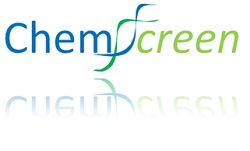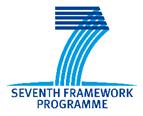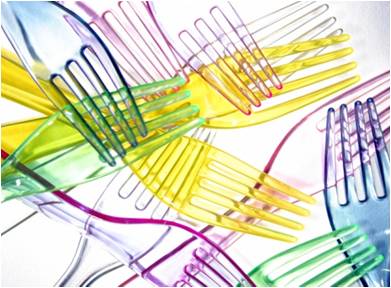

Chemical substance in vitro/in silico screening system to predict human- and ecotoxicological effects (ChemScreen)

• November 2013. Sixth ChemScreen meeting at the Trippenhuis of the KNAW, Amsterdam.
• November 2013. Second Open ChemScreen Symposium on Molecular Screening Tools for Reproductive Toxicants at the Royal Academy of Sciences, Amsterdam, The Netherlands (www.knaw.nl) The symposium will bring together regulators and leading scientists from academia and industry to provide an overview of the current status of molecular screening tools for reproductive toxicants and their possible applications for regulatory purposes.
For program and registration click here
• July 2013. Key collaborative paper: “Evaluation of an alternative in vitro test battery for detecting reproductive toxicants” by Piersma AH, Schulpen SHW, Uibel F, Van Vugt-Lussenburg, B, Bosgra S, Hermsen SAB, Roelofs MJE, Man, H., Jonker, L., Van der Linden, S, Van Duursen MBM, Wolterbeek APM, , Schwarz M, Kroese ED, Van der Burg B. Reprod. Toxicol. 38:53-4 http://www.sciencedirect.com/science/article/pii/S0890623813000543.
• May 2013. Presentation of ChemScreen update 2013 at the meeting of the Extended Advisory Group on Molecular Screening and Toxicogenomics. OECD headquarters, Paris, France (www.oecd.org) The presentation by Bart van der Burg concentrated on new plans on adverse outcome pathway design and the newly drafted In vitro test battery for detecting reproductive toxicants.
• February 2013. Fifth ChemScreen meeting at the Fraunhofer Institute for Toxicology and Experimental Medicine ITEM, Chemical Risk Assessment, Hannover, Germany (http://www.item.fraunhofer.de)
• May 2012. Presentation of ChemScreen at the Axlr8 Workshop 2012 (www.axlr8.eu) in Berlin, Germany, showing the progress of the ChemScreen project.
• April 2012. Special ChemScreen meeting on feasibility study and adverse outcome pathways at TNO (www.tno.nl) in Zeist, the Netherlands. This meeting was organized ChemScreen’s first feasibility study in which a limited set of compounds were tested in the screening panel for reproductive toxicants. Additional studies were planned extending the scope towards integration of the tests in an integrated testing strategy and predictions using adverse outcome pathways.
• February 2012. Presentation ChemScreen at annual TIVSC meeting (http://tivs-center.uh.edu) at the University of Austin (www.utexas.edu), Texas, USA. At the annual meeting of ChemScreen’s sister project the US-EPA funded Texas Indiana Virtual STAR Centre the progress and of ChemScreen project was presented.
• January 2012. Fourth ChemScreen meeting
at the Trippenhuis of the KNAW, Amsterdam.
• January 2012. Open ChemScreen Symposium on Molecular Screening Tools for Reproductive Toxicants will take place at the Royal Academy of Sciences, Amsterdam, The Netherlands. The symposium brings together leading scientists in the field and aims to provide an overview of the current status to the scientific community, regulators and end-users and to promote interactions to achieve practical application.
For program click here.
For
presentations click here.
• June
2011. Presentation at ECVAM (http://ecvam.jrc.it)
of the molecular screening approach used in ChemScreen to
test for endocrine disrupting chemicals, including the status of
validation of these tests. The setup and automation of
screening panels for reproductive toxicants was presented and discussed.
• May
2011. Presentation of ChemScreen at the Axlr8 Workshop 2010
(www.axlr8.eu)
in Berlin, Germany, showing the progress of the ChemScreen project.
• April
2011. Third ChemScreen meeting at the University of Tubingen
(www.uni-tuebingen.de).
A major topic of the third meeting was the discussion of the steps
needed to set up of an integrated testing strategy. In addition,
a feasibility study to challenge the developed screening panel was
launched.
• February
2011. Presentation ChemScreen at annual TIVSC meeting (http://tivs-center.uh.edu)
at the University of Houston (www.uh.edu),
Texas, USA. At the annual meeting of ChemScreen’s sister
project the US-EPA funded Texas Indiana Virtual STAR Centre the
ChemScreen project and its first results were presented.
• December
2010. Update of the ChemScreen project and its progress at the US
EPA, Washington DC, USA. A presentation was given by Bart van
der Burg to participants to the annual meeting of the OECD Advisory
Group on Molecular Screening and Toxicogenomics.
• November
2010. Presentation of ChemScreen/ReProTect results at IVTIP
meeting (www.ivtip.org).
In the context of the BDS participation to ReProTect (www.reprotect.eu)
the results obtained from the project were presented and the next
phase towards application of molecular screening tools was introduced,
including the ChemScreen approach as an important step.
• September
2010. ChemScreen second meeting at TNO (www.tno.nl)
Zeist, The Netherlands. This second meeting included for the
first time participation of the Advisory Board. In addition to presentation
of ChemScreen progress two workshops were held in
which choices of chemicals and test systems to be used in the project
were further defined.
• September
2010. Launch of homepage.
In September 2010 the ChemScreen homepage
has been launched. Its first version is straight-forward and depending
on further needs it will be gradually extended with new functionalities
and applications.
• June
2010. Presentation of ChemScreen at the annual meeting of
the NVT (Netherlands Society of Toxicology: www.toxicologie.nl)
in Zeist, The Netherlands.
The central theme of this meeting, co-organized
by ChemScreen partner Aldert Piersma, was: Innovative testing in
Reproductive Toxicology and Toxicologic Pathology. During
his presentation (“In vitro screening methods to predict endocrine
disruption and reproductive toxicity”) at this meeting in Zeist
ChemScreen coordinator Bart van der Burg presented screening
approaches initiated in the context of the ReProTect (www.reprotect.eu)
project, and the novel ChemScreen approach.
• May
2010. Presentation of ChemScreen at the Axlr8 Workshop 2010 (www.axlr8.eu)
in Potsdam, Germany.
The Axlr8 project is a novel FP7 project to
accelerate the acceptance of novel in vitro methods to replace animal
testing. ChemScreen coordinator Bart van der Burg presented an introduction
to the ChemScreen project, and participated in the workshop and
the preceding OpenTox workshop (www.opentox.org)
• February
2010. Kick-off meeting at BioDetection Systems, Amsterdam.
All partners
participated at a lively kick-off meeting in Amsterdam. We also
welcomed Dr Maria Bondesson of the NCCT sister project on screening
methods for developmental toxicants, the Texas Indiana Virtual STAR
Centre (http://tivs-center.uh.edu ), who presented the TIVS Centre
plans. Based on further discussions the ideas for collaboration
were formulated.
• January
2010. Establishment of a Material transfer agreement (MTA) with
US-EPA NCCT(www.epa.gov/ncct).
The US Environmental Protection
Agent’s National Center for Computational Toxicology is a major
center for development of innovative high throughput in vitro toxicology
tools for assessing chemical exposure, hazard and risk. The establishment
of a MTA between ChemScreen’s coordinator BioDetection Systems (www.bds.nl),
expands the bilateral set of MTA’s between NCCT and ChemScreen partners.
This greatly facilitates the possibilities to collaborate through
exchange of data sets, and reciprocal participation in advisory
work. We are very pleased that Dr David Dix, acting director
of NCCT, will chair the advisory board on ChemScreen.
• January
2010. ChemScreen officially started.
In the past months
the Grant Agreement and the Technical Annexes have been prepared
with the final project description. January 1, 2010 is the data
that the ChemScreen project has been officially started.
• November
2009. Presentation ChemScreen proposal at IVTIP (www.ivtip.org ),
Antwerp, Belgium.
The ChemScreen project was presented by
Bart van der Burg to the member companies of the In vitro Testing
Industrial Platform (IVTIP).
• October
2009. Presentation ChemScreen proposal at the OECD Headquarters,
Paris.
A presentation was given by Bart van der Burg to participants
to the annual meeting of the OECD Advisory Group on Molecular Screening
and Toxicogenomics.
• September
2009. Presentation ChemScreen proposal at the National Center for
Computational Toxicology (NCCT) of the US EPA (www.epa.gov/ncct)
Research Triangle Park, North Carolina, US.
An introductory presentation
on the ChemScreen project was given by Bart van der Burg at a meeting
of the EPA STAR centers.
